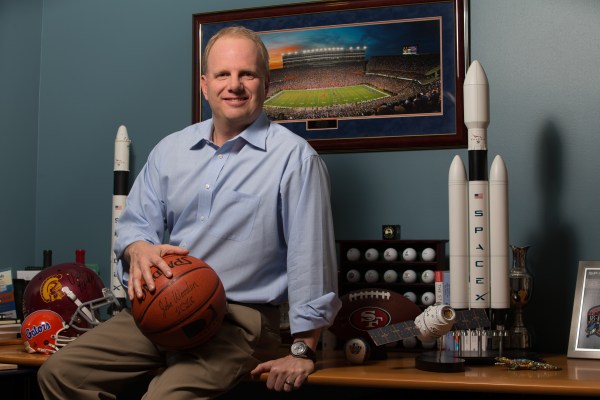DFJ, the renowned Sand Hill Road Firm, is celebrating its 30th anniversary this year. At the same time, its low-flying, later-stage offshoot, DFJ Growth, is turning 10.
This week, we caught up with DFJ Growth cofounder Randy Glein to understand how closely related or not the two remain, how the firm is feeling about the shaky late-stage market, and whether his team of five general partners is ready to raise their own, third, fund from investors. Our chat has been edited for length.
TC: Quickly, what are you looking for when you’re writing checks? How mature does a company need to be?
RG: We pick up where venture funds leave off. We’re invest in the scaling phase of businesses, so we’re looking for that inflection point where the company has found its product market fit and customers who are paying for its products. We come in when companies are generating low tens of millions of dollars in annual bookings, growing more than 100 percent a year, and playing in a market that’s big enough to support a large company. That can be $1 billion to $100 billion dollars, depending on the market opportunity.
TC: Can you invest in a company regardless of whether or not DFJ’s venture team has made an earlier investment in it?
RG: Many companies we’ve co-invested in with DFJ and not followed. It just depends on the stage of the business. Also, as we’ve raised bigger funds – our first fund closed with $290 million in 2007 and our second closed with $470 million in 2013 — there’s been less overlap. I’d say 25 to 30 percent of our first fund was invested in companies backed by DFJ; in the second fund, it’s less than 10 percent. Our charter is to invest in the most exciting growth-stage companies on the planet, and to go anywhere to find them.
TC: Do you share the same investors?
RG: Again, there was more overlap in first fund; with the second fund, less than half the capital is coming from [DFJ’s same investors]. Some LPs want to invest in venture. Some want to invest in growth stage companies because they have a different risk tolerance profile or need to take a different size bite. Some want both and see us as sister funds.
TC: Are you raising another fund in 2016?
RG: We still have several investments to make out of our existing fund so we haven’t announced the timing [of our next fund].
TC: What are you some of your biggest exits to date?
RG: We’ve had several IPOs and several M&A events, primarily from the first fund, including the IPOs of Twitter, Solar City, Box and Tesla Motors, which was our first IPO out of that fund. We also invested in Yammer, which was acquired a few months after we invested; we invested in Tumblr, acquired by Yahoo; we invested in AdMob, which was acquired by Google a year after we invested; and we invested in Good Technology, acquired earlier this year by Blackberry.
TC: Good, formerly called Visto, had raised hundreds of millions of dollars from many VCs over a long period, though it was also recapped at one point. Did that sale return money to your investors?
RG: We got involved back in late 2006, it was our first investment, and it was one of our better-performing investments in terms of cash-on-cash multiples.
TC: Given how much more late-stage companies have been raising in recent years, will you look to raise an even bigger fund?
RG: I wouldn’t correlate fund size with the market environment. We like the fund size we have and I expect it to be in that range. A tremendously larger fund isn’t appropriate for our strategy, and that’s to invest $10 million to $25 million initially, which not a lot of folks do.
TC: It’s shocking that that’s modest by current standards.
RG: Well, it’s really that later-stage growth has really become a crossover stage, where investors are coming in with new sources of capital – be it private equity funds or hedge funds or mutual funds or these special purpose vehicles – at a later stage than where we invest. It’s that pre-IPO stage where we’ve seen a real dissonance or disconnect between the private and public markets over the last couple of years – though I think that’s changing, right now — literally in the last 30 to 60 days.
TC: Is that an aberration or a longer-term trend?
RG: I think companies understand now that if you want a higher price, okay, but [these crossover investors] want downside protection. We’re starting to see companies say, I didn’t realize what that structure ultimately does. So I’m guessing we’ll see more companies that let the market set the true price; we’ll see more of a rationalization of private market pricing.
TC: It’d be nice to see more public offerings, too. For example, you’ve backed SpaceX, which is now 13 years old. What’s it waiting for?
RG: I can’t speak for Elon Musk, but I know he has said there’s a lot to accomplish. They have tremendous vision and even bigger aspirations, and there are very good reasons why it’s better to act on that vision and pursue those aspirations as a private company.
TC: I don’t know. Public shareholders really love Elon Musk, as evidenced by Tesla.
RG: They’re very different companies.
